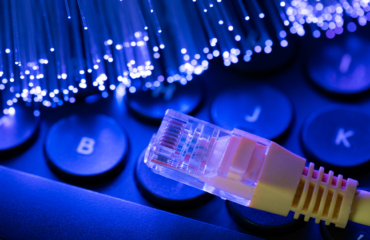When considering wireless network options for enterprises, two major contenders come to the forefront: Private Cellular and Wi-Fi. Each of these technologies has distinct benefits and drawbacks that make them more or less suitable depending on specific use cases and needs. In this blog, we will dive deep into both technologies, comparing their benefits, drawbacks, and practical implementations to help organizations make an informed choice.
Wi-Fi: The Long-Standing Choice
Benefits: Wi-Fi has been a popular choice for enterprises for many years due to several key advantages:
- Cost-Effective and Easy to Install: Wi-Fi networks are relatively inexpensive to set up and require minimal specialized knowledge, making them accessible for businesses of all sizes.
- Established Technology: Wi-Fi is a well-established technology with a vast device ecosystem, which means most consumer and enterprise devices are Wi-Fi compatible out of the box.
- Ease of Management: Wi-Fi networks are easy to manage and maintain, often fitting within the existing IT staff’s skillset.
- Unlicensed Spectrum: Wi-Fi uses unlicensed spectrum, which is free to use, resulting in lower operational costs for spectrum access.
- Network Flexibility: Wi-Fi can also be integrated with private cellular networks, giving flexibility in network configurations.
Drawbacks: While Wi-Fi has numerous benefits, it also comes with several challenges:
- Coverage Issues: Wi-Fi typically requires many Access Points (APs) to achieve comprehensive coverage, leading to increased deployment and maintenance costs. Due to poor coverage, devices frequently disconnect from the network and reconnect.
- Limited Scalability: As Wi-Fi networks grow, the number of APs needed increases significantly, resulting in network congestion and degraded user experience, especially as more devices connect.
- Upgrade Limitations: Upgrading between versions often involves replacing or adding new hardware, which can be costly and time-consuming.
- Security and Traffic Management Limitations: Wi-Fi is sometimes seen as less secure, with limited capabilities to differentiate traffic and manage users/devices individually. This makes enforcing specific security policies challenging.
Private Cellular: The Emerging Contender
Benefits: Private Cellular networks, often utilizing 4G or 5G technology, offer a more robust and scalable alternative to Wi-Fi:
- Independent Deployment: Private cellular networks can be deployed without relying on a Mobile Network Operator (MNO), especially when using CBRS (Citizens Broadband Radio Service) in the U.S.
- High Performance: Private networks support high-bandwidth, low-latency services, making them ideal for applications requiring real-time communication and fast response.
- Flexibility in Spectrum Use: Private cellular networks can use both licensed and unlicensed spectrum, providing adaptability based on country regulations.
- Scalability: By adding spectrum and core network capabilities, a private cellular network can scale seamlessly to support more nodes and devices.
- Advanced Management Tools: Private networks use the same security, policy enforcement, and network management tools as public cellular networks. This allows for per-device policy definition, giving greater control over network security and performance.
Drawbacks: Despite the promising benefits, private cellular also has its own set of challenges:
- Complexity: Private cellular networks are more complex to implement compared to Wi-Fi. They require specialized skills related to 4G/5G technology, RF networks, and cellular management.
- Limited Device Availability: The ecosystem of devices supporting 5G CBRS is still developing, although it is growing rapidly.
- SIM Management: Deploying a private cellular network requires managing physical or virtual SIMs (eSIMs). While eSIM technology simplifies this task, it still requires additional setup compared to Wi-Fi.
Combining Wi-Fi and Private Cellular
In many enterprise environments, Wi-Fi and private cellular do not have to be mutually exclusive. Instead, they can complement each other by providing a robust and flexible network infrastructure. For example, Wi-Fi is often preferred for general connectivity due to its ease of use and low cost, while private cellular is used for applications that require reliable, low-latency, and highly secure connections.
Hybrid Deployments A hybrid approach can combine Wi-Fi and private cellular networks to extend coverage across multiple buildings while using SD-WAN to interconnect these networks. This allows organizations to take advantage of the strengths of both technologies while minimizing their respective weaknesses. In these scenarios, edge computing is also deployed to enhance local data processing, thereby improving application latency and reducing the load on the network.
Conclusion
Wi-Fi and private cellular networks each have their strengths and weaknesses, and the choice between the two largely depends on the specific requirements of the business. For small businesses or general office use, Wi-Fi remains an easy, cost-effective solution. However, for enterprises requiring secure, scalable, and reliable connectivity, private cellular offers a compelling alternative. In many cases, a combination of both technologies provides the best of both worlds, enabling flexibility and enhanced performance.




